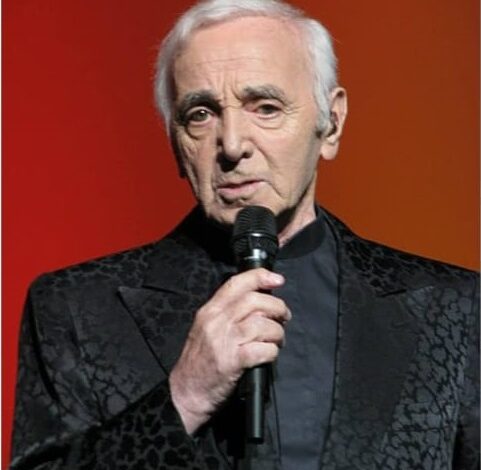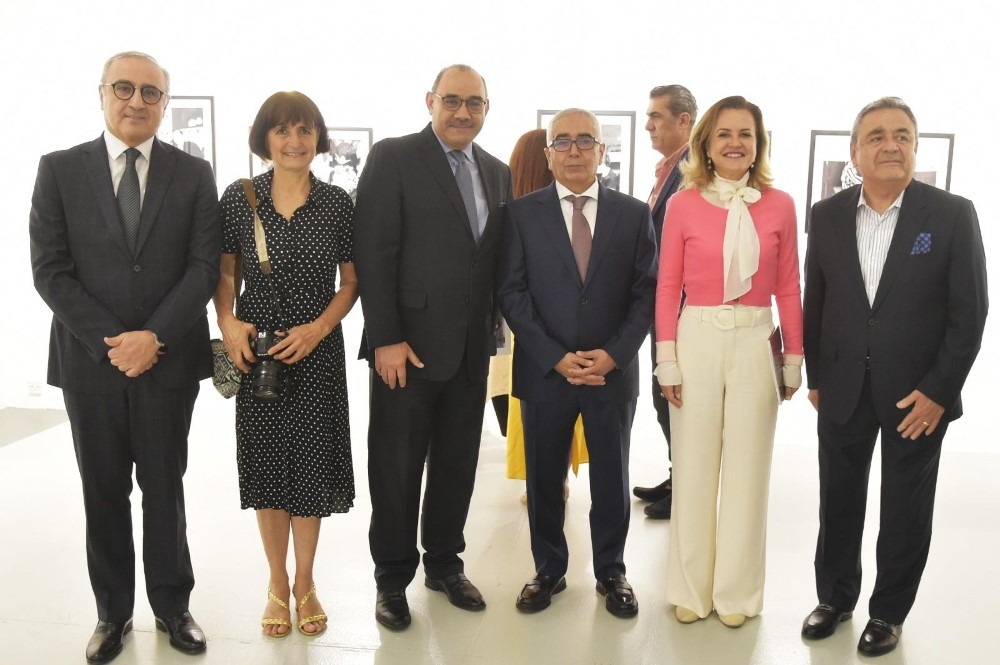French, Armenian embassies host exhibition to honour Charles Aznavour on 100th birth anniversary
The renowned singer of Armenian origin and French nationality wrote and performed more than 1,200 songs in nine languages, including French, English, German, Russian, Italian, and, of course, Armenian.

-
Charles Aznavour was an icon, celebrated not only in France and Armenia but around the world. His remarkable contributions to music and humanity have a lasting impact, as he continues to inspire audiences everywhere, said H.E. Claire Le Flécher, the Ambassador of France to Kuwait.
-
H.E. Sarmen Baghdasarian, Armenia’s ambassador to Kuwait, said that Aznavour’s music touched the hearts of millions around the world, transcending borders, cultures, and generations. Aznavour was more than just a musician; he was a poet, leader, and symbol in both France and Armenia, as well as an ambassador and a beacon of love and steadfastness.
The embassies of France and Armenia in Kuwait hosted a photo exhibition at the Contemporary Art Platform to honor Charles Aznavour, the renowned singer of Armenian origin and French nationality, on the 100th anniversary of his birth. The exhibition features photographs taken by the late Roger Kasparian.
On this occasion, H.E. Claire Le Flécher, the Ambassador of France to Kuwait, said that it is a great honor to stand before you in honoring the life and legacy of the exceptional French and Armenian singer, Charles Aznavour, on the centenary of his birth.
She added: Aznavour was an icon, celebrated not only in France and Armenia but around the world. His remarkable contributions to music and humanity have a lasting impact, as he continues to inspire audiences everywhere.

Ambassador Le Flécher continued, “He is known for proudly speaking about his dual heritage and is remembered for his talent, touching lyrics, ability to convey feelings, deep compassion, and commitment to both his countries, Armenia and France. He is also a symbol of Francophonie, demonstrating how the French language and Francophone values unite us in our diversity. These values enhance communication between people and cultures and build a future world that respects individual differences and privacy.”
She explained that Francophonie makes intercultural dialogue a driving force behind positive change, offering an alternative to the painful premise of a clash of civilizations or a war of religions, as we are global citizens.
The French ambassador stated, “Today, we are also here to celebrate the art of Roger Kasparian, whose pictures in this exhibition serve as a timely witness to the spirit of Aznavour and his legacy. Although we are saddened by the recent death of Kasparian, we are honored to have his daughter, Lydia Kasparian, with us tonight. Her presence is a poignant reminder of the enduring relationship between our two great countries and the shared admiration we have for Charles Aznavour.”

H.E. Sarmen Baghdasarian, Armenia’s ambassador to Kuwait, said in a similar speech that Aznavour’s music touched the hearts of millions around the world, transcending borders, cultures, and generations. Aznavour was more than just a musician; he was a poet, leader, and symbol in both France and Armenia, as well as an ambassador and a beacon of love and steadfastness.
He added: “Aznavour deeply loved his two countries, France and Armenia. In his own words, he was 100% French and 100% Armenian. Although he was indeed both, he was also a citizen of the world.”
He continued: “He wrote and performed more than 1,200 songs in nine languages, including French, English, German, Russian, Italian, and, of course, Armenian. Aznavour is considered one of the greatest songwriters of all time and an icon of popular culture in the twentieth century.”
He said, “In addition to his amazing career, Aznavour was also a great humanitarian. His fundraising campaigns were crucial in overcoming the devastation caused by the devastating earthquake that struck Armenia in 1988. Since then, he has collected donations for many humanitarian projects around the world. He collaborated with and supported fellow artists to help victims of the 2010 Haiti earthquake and funded research projects aimed at preventing and treating serious diseases.”

In turn, Lydia Casparian states, “I am here on behalf of my father, the photographer Roger Casparian, who is known for photographing all the major French and international music stars as well as movie stars in the 1960s. He was nicknamed ‘The Eye of the Sixties.’ For example, but not limited to, he photographed Johnny Hallyday, Edith Piaf, Jacques Brel, Dalida, and Claude François, but also the Beatles, the Rolling Stones, Louis Armstrong, Ray Charles, Alain Delon, and Sophia Loren. A very special bond linked him to Charles Aznavour, whom he knew closely, especially in his early days.”
She continued: “My father and Charles Aznavour were of Armenian origin, but they were born in France, which gave them a very rich dual culture. Both men were self-made and achieved success thanks to their talent, but above all thanks to their perseverance and continuous work.”
She explained: “The centenary of Aznavour’s birth is being celebrated all over the world. Last week, I was in New York at the United Nations headquarters. In Paris, the French Post Office issued a special collector’s stamp inspired by a photograph displayed at the CAP in his honor. Today, Aznavour is in Kuwait, tomorrow in Armenia, and the day after tomorrow in Argentina.”












